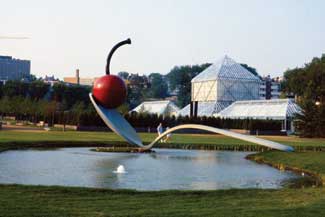
Walker Art Center, Minneapolis, landscape architect by Quennell Rothschild & Partners.
This example of an estate is so far from sustainable. The original Tara was built with minimal resource requirements and needs. If we are evolving as a species and profession, can?EUR??,,????'?????<
Leland Walmsley
Principal, LEED AP, ASLA
everGREEN landscape architects, Inc.
Santa Barbara, Calif.
Mr. Rothschild?EUR??,,????'?????<
Ernest Passkey
Citrus County Landscape Architect
Lecanto, Fla.
I wanted to thank Rene Torres for her timely and poignant letter (April LASN). It should serve as a ?EUR??,,????'?????<
I have seen our National Mall first hand several times over the past 10 yrs. and its continued slow deterioration and our profession?EUR??,,????'?????<
Tom Killip, RLA
Owner/Principal Landscape Architect
Killip Land Planning, Phoenix, Az.
Editor?EUR??,,????'?????< Department of Interior Secretary Ken Salazar announced April 23 the National Park Service would receive $750 million through the American Recovery and Reinvestment Act. The good news is $55,825,000 of that is slated for the National Mall, which has a $400 million maintenance backlog. For more on that, see p. 105 news.

While the contributions of the firms involved is commendable, the photos illustrate what commonly occurs when a trail restoration project does not focus on the experience of the trail itself. The trail has been made too wide, too smooth, too manicured and has had any special character wrung out of it. Compared to how it once was, it now looks and feels like a road. It will not retain the interest of most, and especially younger, users nearly as well as the trail experience it replaced. Widening it has eliminated much of the sense of wonder it once had since users can now see for much longer distances than before. When designers seem to be more concerned with providing adequate width for vehicular access (which appears to be the case here), it is no longer a trail, and it certainly isn?EUR??,,????'?????<
Locally, we are beginning to get land managers to understand this and to bring interest back into trail restorations by keeping them narrow, accentuating curvature, avoiding straight lines and even pulling boulders and deadfall that were shoved out of the way during construction back onto the trails. These restored rough areas provide protected pockets for native planting, which further accentuate trail curvature, channel use and create visual interest.
Good trails create wonder and delight, with a sense of mystery about what may be coming around the next turn, drawing the user forward.
John Eric Holloway, LLA, ASLA
Senior Associate Landscape Architect/Planner, KTU+A Planning + Landscape Architecture, San Diego, Calif.
